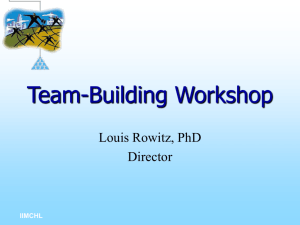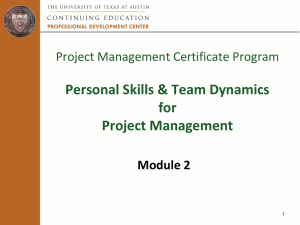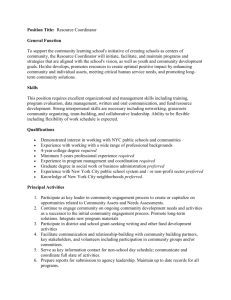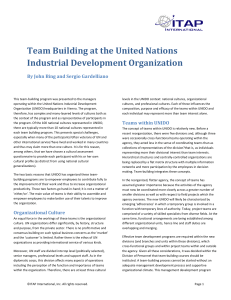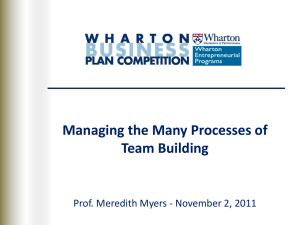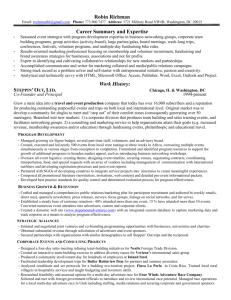Evaluation Report - Organizational Development Strategies Adaku
advertisement
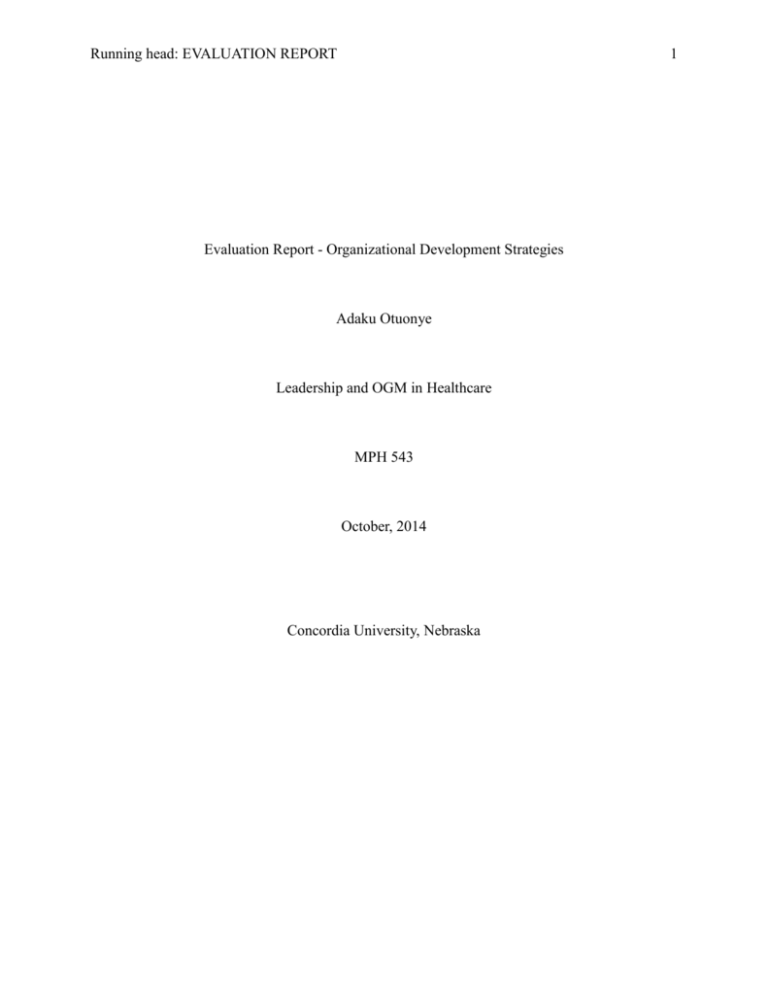
Running head: EVALUATION REPORT 1 Evaluation Report - Organizational Development Strategies Adaku Otuonye Leadership and OGM in Healthcare MPH 543 October, 2014 Concordia University, Nebraska EVALUATION REPORT 2 Introduction Organization Development Organization Development (OD) is a standardized process of addressing organizational problems or implementing change strategies. It is usually an effort to improve the effectiveness of the organization through planned intervention processes. It is characterized by features such as; is a planned change, a holistic approach, an approach that is problem orients and solution providing and focuses on organizational process - human and structural. Note. Adapted from “A Beginner’s Guide to Organization Development” by C. Foster, 2008, Organization Development. Org. Copyright 2014 by Organization Development. According to Amando, (2009), to effectively adapt and thrive in business world, organizations need to implement effective OD interventions. It has been known that the success of any intervention used in the organization development therefore to a very large extent depends on the skills and knowledge of the leadership and the ability of employees to support the process. EVALUATION REPORT Organizational Intervention These are processes aimed at improving organizational performance, employees’ wellbeing and help increase the effectiveness of the organization through a sequence of planned actions. Though often initiated by the top management, it requires the support of the entire organization crew members at every levels of the organization. (Dike, 2012). Team Building This type of intervention process focuses to improve different aspects of a group performance, increase the effectiveness of group work. Its main objective is improving interdependency of team members under the premise that the value of the aggregated team is much greater than any individual. Strengths and Weakness Team-building activities are employed to increase positive communication, Increase department productivity and creativity improve morale, improves job satisfaction and commitment, higher levels of trust and support, motivate team members to achieve goals and enhance bonding 3 EVALUATION REPORT 4 Note. Adapted from “Examples of Business Team-Building Activities” by M. Markovich, 2014, Houston Chronicle. Copyright 2014 by the Hearst Newspapers, LLC. Weakness attributed to team building are; it can be expensive to carry out and ineffective when performed inappropriately by the leaders. It often leads to more conflict and tension. It limits innovative thinking leading to stagnation of the company. Workers with specific valuable skills for their jobs who don't translate well into a social environment, will not function well, rather team building may prove ineffective and affect interaction among participants. For example, an individual with technical knowledge who completes most tasks individually will have an unfair disadvantage in a team-building exercise that includes workers who interact with one another on a regular basis. Going through the process of team-building training may develop poor social relationships that distract them from their regular work or lead to unprofessional attitude in the workplace. Also, team leaders are obliged to ensure that all team-building efforts are focused on EVALUATION REPORT 5 business goals and that the workers maintain an attitude of respect toward other participants. Building an effective team involves the leaders to first identify the issues facing their group and then plan activities to address these challenges, Keeping competition out of the exercises, and focus on making team building part of the daily corporate culture not just a once-a-year event. Examples of Team-Building This can be categorized into two extremes – fun and developmental. The fun category are used to bond new teams together or rejuvenate an already existing team using ropes courses, scavenger hunts, icebreakers and even the camping trips. It’s essential to support these with solid analysis. The developmental category are usually the workshops and intensive team-building exercises to a group of professionals already focused on addressing certain issues. They often times have very specific goals. The following are examples of team-building activities that enhance: Communication - A team’s plane hypothetically crashes on a desert island; the team has to choose and rank 12 items needed to survive. Relationships - Teams does a volunteer job and work together in the volunteer situation. Bonding - During learning breaks, employees share special hobby or interest with the group. Trust - An individual leads a blindfolded partner through a room full of objects Performance Management This is a type of human resource management intervention. It is focused on identifying specific mechanism for ongoing measuring and managing workers individual performance, the performance of team, and even the organization. For example, goals setting, measuring the employee's achievement and performance, sharing feedback and rewarding employee or firing the employee. Strengths and Weakness The major strengths associated with performance management systems include; EVALUATION REPORT 6 Performance management does not focus behaviors and activities but rather focuses on results. A worker can appear to be busy, and yet not contributing to the goals of the organization. For example, a worker manually, not supporting automation review of completion of every form and procedure may be seen to be working hard and deserving a high performance rating. Yielding meaningful measurements. Identifying organizational goals and aligns activities and processes towards the organizational goals Creating changes in perspective to achieve results. Promoting equal treatment among employees by basing appraisals on results. It Validates expectations It promotes an ongoing communication and feedback about organizational goals. The major weakness associated with performance management systems include: It is extraordinarily difficult It is often unreliable with measuring such complex phenomena as performance. With today's organizations constantly changing, results and measures become obsolete quickly. It seems impersonal translating human desires, interactions and performance to measurements. Examples Relative value – Progress is not a quantitative target but the ultimate goal. Example: 80% of employees get involved with the customers meaningfully. Benchmarking - systematically identify where knowledge gaps exist and to close them using some well-defined processes EVALUATION REPORT 7 Summary & Conclusion Organization need to remain effective even if it involves changing. These unique OD interventions are designed to get an ineffective organization to address the dysfunctional behaviors and attitudes and aim to achieve consensus commitments required for building a cohesive high-performance team. EVALUATION REPORT 8 References Amando, J. (2009). Organizational development (OD) interventions: Managing systematic change in organizations. Retrieved from http://armandojusto.blogspot.com/2009/04/organizational-development-od.html McNamara, C. (n.d.). Performance Management: Basic concepts. Retrieved from http://managementhelp.org/performancemanagement/index.htm Dike, V. E. (2012). Planned interventions and organization development: The role and impact of leadership on change. Retrieved from http://www.nigeriavillagesquare.com/victordike/planned-interventions-and-organization-development-the-role-and-impact-ofleadership-on-change.html Markovich, M. (2014). Examples of Business Team-Building Activities. Houston Chronicle. Retrieved from http://smallbusiness.chron.com/examples-business-teambuildingactivities-21000.html
